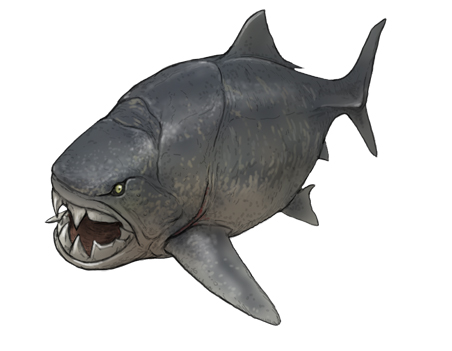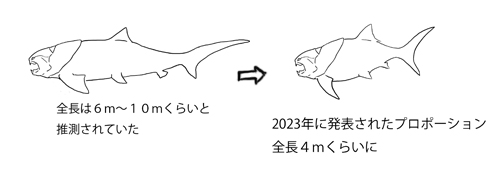|
ダンクレオステウス 属名(Dunkleosteus ) 中国名(?氏魚) |
|

|
分類 Classification |
魚類・板皮綱・節頸目・ディニクチス科 Fish, Placodermi, Arthrodira, Dinichthyidae |
生息年代 Fossil range |
デボン紀後期 Late Devonian |
生息地域 Habitat |
北米、北アフリカの海域 Sea in North America and Africa |
体長 Body length |
5〜9m 5 - 9 m |
|---|---|
|
ダンクレオステウスは無顎魚類(アゴのない魚)よりひとつ進化した 板皮魚類(アゴのある魚)と呼ばれるグループに属し、はっきりした アゴという構造をもつことによって、他の動物を襲って食べるとい った強肉食性が現れました。またサメの仲間と同じく、軟骨性の脊柱や 浮き袋をがなかったので沈まないようにいつも泳いでいかなけらば ならなかったか、海底を這うように泳いでいたと考えられています。 サメ類と多くの共通点があり、サメ類と板皮魚類は同じ祖先をもって いたと考えられています。 ダンクルオステウスは板皮魚類の中でも最も大型で、頭部以外の 体はわかっていませんが、その体長は9mもあるとも推測されています。 おそらく当時の海洋生態系を君臨していたものといわれています。 ■追記(2024年12月16日)■
2023年には新たな研究発表がされ、全長は3,4〜4,1mと推定されて
|
